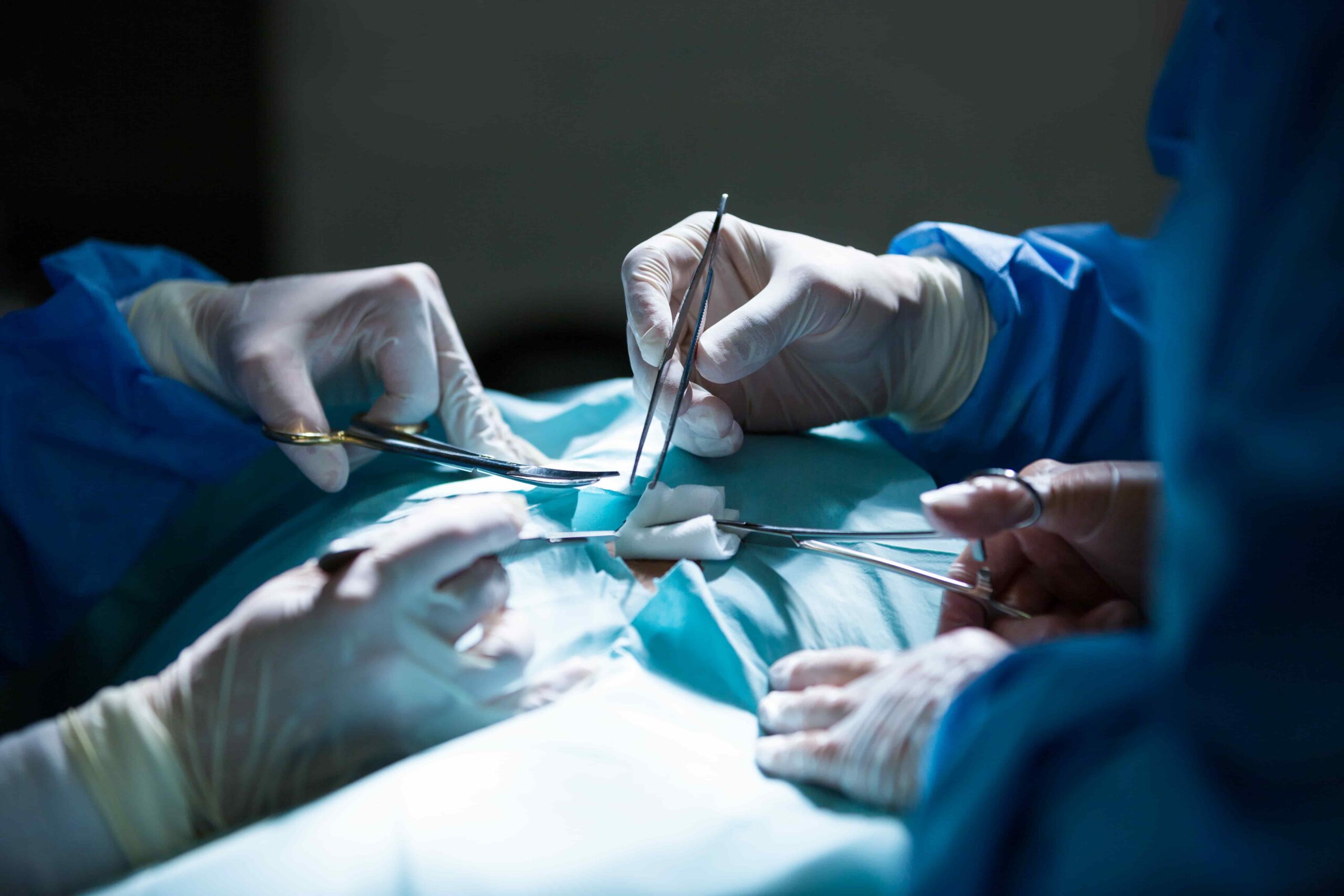In a monumental leap for medical science, surgeons have successfully performed the world’s first human bladder transplant. This groundbreaking procedure, carried out by a collaborative team from Keck Medicine of USC and UCLA Health, marks a significant advancement in the field of organ transplantation. The operation not only showcases the remarkable progress in surgical techniques but also offers new hope to patients suffering from severe bladder dysfunctions.
The bladder, a complex organ responsible for storing and expelling urine, presents unique challenges when it comes to transplantation. Unlike other organs, the bladder’s intricate network of nerves and blood vessels makes it particularly difficult to transplant successfully. This historic surgery demonstrates the culmination of years of research, innovation, and determination by a dedicated team of medical professionals.
2. The Complexity of Bladder Transplantation
Transplanting a bladder is an endeavor fraught with challenges. The organ’s deep location within the pelvis, coupled with its complex vascular and neural connections, makes surgical access and successful transplantation exceedingly difficult. Historically, attempts at bladder transplantation have been limited and largely unsuccessful due to these anatomical complexities.
One of the primary hurdles is ensuring adequate blood supply to the transplanted bladder. The organ’s function is heavily reliant on a delicate balance of blood flow and nerve signals, both of which are challenging to replicate in a transplant scenario. Additionally, the risk of organ rejection and the need for lifelong immunosuppression add layers of complexity to the procedure.
Despite these challenges, advancements in surgical technology and a deeper understanding of bladder anatomy have paved the way for this groundbreaking operation. The successful transplant signifies a turning point, demonstrating that with meticulous planning and execution, even the most complex organ transplants can become a reality.
3. Pioneering Surgeons and Institutions
The success of the world’s first bladder transplant can be attributed to the relentless efforts of Dr. Inderbir Gill and Dr. Nima Nassiri. Dr. Gill, a renowned urologist with a history of pioneering robotic kidney transplants, brought his extensive experience and innovative approach to the project. Dr. Nassiri, his former resident and now a faculty member at UCLA, collaborated closely with Dr. Gill to develop and refine the surgical techniques necessary for the transplant.
Keck Medicine of USC and UCLA Health played pivotal roles in facilitating this medical milestone. Their commitment to cutting-edge research and patient care provided the necessary infrastructure and support for the complex procedure. The collaboration between these institutions exemplifies the power of teamwork and shared vision in achieving groundbreaking medical advancements.

4. The Surgical Procedure
The bladder transplant procedure was the culmination of over four years of rigorous research and preparation. The surgical team began by meticulously planning the operation, utilizing advanced imaging techniques to map out the intricate anatomy of both the donor and recipient.
The surgery itself was an eight-hour endeavor, involving the transplantation of both a bladder and a kidney from a deceased donor. The team employed robotic-assisted surgery to enhance precision and control during the operation. This approach allowed for smaller incisions, reduced blood loss, and improved visualization of the deep pelvic structures.
Key steps in the procedure included:
- Harvesting the donor bladder and kidney with intact blood vessels.
- Preparing the recipient’s pelvic region for implantation.
- Connecting the donor organs to the recipient’s vascular and urinary systems.
- Ensuring proper alignment and function of the transplanted organs.
The use of robotic technology was instrumental in navigating the complex pelvic anatomy and achieving successful outcomes.
5. Postoperative Care and Recovery
Following the transplant, the patient, 41-year-old Oscar Larrainzar, experienced a remarkable recovery. Prior to the surgery, Larrainzar had lost most of his bladder due to cancer treatment and had been reliant on dialysis for seven years. The successful transplant not only restored his bladder function but also eliminated the need for dialysis, significantly improving his quality of life.
Postoperative care focused on monitoring organ function, preventing infection, and managing immunosuppressive therapy to prevent organ rejection. Larrainzar’s recovery was swift, with immediate improvement in kidney function and successful urine drainage into the new bladder. His case serves as a testament to the potential benefits of bladder transplantation for patients with severe bladder dysfunction.
6. Technological Innovations in the Procedure
One of the standout elements of this historic bladder transplant was the extensive use of advanced surgical technology, particularly robotic-assisted systems. Robotics in surgery isn’t exactly new, but its application in such a complex organ transplant marks a significant evolution in how delicate procedures can be performed with enhanced precision and safety.
The team led by Dr. Gill and Dr. Nassiri employed a high-definition, 3D robotic surgical system that allowed for incredible control over the instruments, surpassing the capabilities of human hands. This was crucial for navigating the deep pelvic region where the bladder resides, a place notoriously difficult to reach and operate within due to space constraints and the presence of vital surrounding structures.
The robotic system enabled microsurgical precision when connecting blood vessels and ureters—tiny tubular structures that carry urine from the kidneys to the bladder. This precision dramatically reduces the risk of complications such as leakage or thrombosis, which are common in such intricate surgeries.
Moreover, robotic surgery minimizes physical trauma to the patient. Smaller incisions mean reduced pain, lower risk of infection, shorter hospital stays, and quicker recovery times. These benefits were all observed in Oscar Larrainzar’s case, making a strong argument for integrating robotic systems in future organ transplants, especially those involving anatomically challenging organs like the bladder.
7. Preclinical Studies and Trials
Before taking the plunge into human surgery, Dr. Gill’s team spent over four years conducting preclinical studies. These included extensive trials on cadavers and animal models to refine the surgical techniques and understand the biological behavior of bladder transplantation. This preparatory phase was critical to the eventual success of the procedure.
The team practiced transplanting bladders in pigs, which share similar anatomical features with humans in terms of organ size and structure. These trials allowed the surgeons to test various techniques for connecting blood vessels and nerves, optimizing each step to improve the chances of success when performing the procedure on a living human.
They also conducted cadaver surgeries to understand the limitations and challenges posed by human anatomy. This work was meticulous and iterative—each experiment informed the next, gradually building a comprehensive protocol that could be translated into clinical practice.
Ethical approval for the procedure was another significant hurdle. The surgery underwent rigorous scrutiny from institutional review boards to ensure it met the highest standards of safety and ethical responsibility. Once approved, the team moved swiftly, waiting for the right patient and donor match to make history.
8. Patient Case Study: Oscar Larrainzar
Oscar Larrainzar’s story is as compelling as the medical breakthrough itself. A former truck driver and father of three, Oscar faced a grim reality. A decade ago, he underwent radiation treatment for cancer that severely damaged his bladder, leading to its partial removal. Left with a non-functioning urinary system and in need of constant dialysis, his quality of life had plummeted.
When doctors approached Oscar about the possibility of receiving the world’s first bladder transplant, he didn’t hesitate. His willingness to be a medical pioneer stems from a deep desire to reclaim a normal life and help future patients facing similar conditions.
The surgery was performed in a carefully coordinated session where Oscar received both a bladder and a kidney from a single deceased donor. This dual transplant was strategic—it ensured that the new bladder would function in concert with a healthy kidney, maximizing the success of the procedure.
Oscar’s recovery was nothing short of miraculous. Within days, he began producing urine normally—a sign that the bladder was functional. His kidney function also stabilized, allowing him to permanently come off dialysis. For Oscar, the transplant wasn’t just a medical success; it was a rebirth. He now speaks publicly about his journey, advocating for organ donation and inspiring others with his courage.
9. Ethical and Immunological Considerations
Every groundbreaking surgery carries with it a heavy dose of ethical and immunological questions. In Oscar’s case, and for all future bladder transplants, managing the risk of organ rejection is paramount. The body’s immune system is designed to attack anything it sees as foreign, and a transplanted organ is no exception.
To prevent rejection, Oscar is on a strict regimen of immunosuppressive drugs. These medications weaken the immune system just enough to prevent it from attacking the new organs while trying to minimize the risk of infections and other complications. This balance is delicate and must be maintained for life.
Ethically, performing a first-in-human surgery requires extraordinary diligence. The procedure was approved under a special regulatory pathway that allows novel surgical interventions to be tested in humans after extensive preclinical validation. The surgeons had to ensure that Oscar fully understood the risks, including the fact that the bladder transplant had never been successfully done before.
There are also broader ethical considerations. Who gets access to such procedures? How do we ensure equitable distribution of these groundbreaking treatments? These are questions the medical community must wrestle with as bladder transplantation moves from experimental to mainstream.
10. Future of Bladder Transplantation
The success of Oscar’s surgery opens the door to a future where bladder transplantation could become a standard option for patients with severe bladder dysfunction due to cancer, congenital disorders, or traumatic injury. But before that can happen, a lot of work remains.
First, more patients will need to undergo the procedure under controlled clinical trials. This will help build a larger dataset to refine the surgical techniques and post-op care protocols. Surgeons will need to determine the long-term viability of transplanted bladders and understand how they hold up over time compared to reconstructed ones.
Second, advancements in immunosuppressive therapy could one day eliminate the need for lifelong medication. Research into immune tolerance and genetically modified organs is already underway and could complement the progress made by this transplant.
Finally, the procedure needs to be scalable. Not every hospital has the robotic infrastructure or the surgical expertise currently required. As training programs and technology dissemination improve, more medical centers may be able to offer this life-changing surgery.
This operation is more than just a medical milestone; it’s a beacon for what’s possible when innovation, courage, and collaboration come together.

